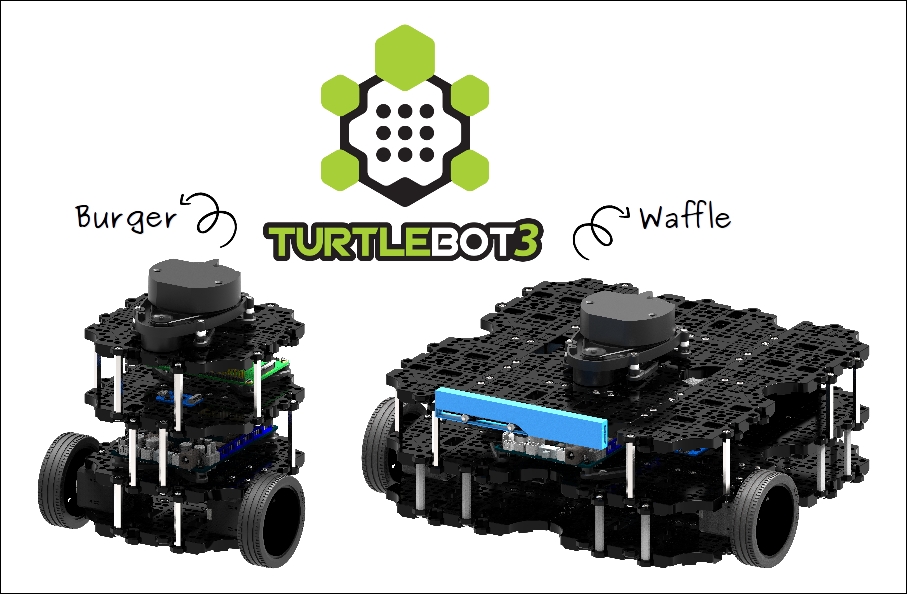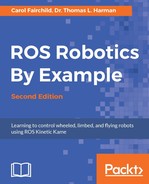At ROSCon 2016, a conference for developers, the TurtleBot 3 was introduced. TurtleBot 3 is a mobile robot designed and manufactured by ROBOTIS that is particularly suitable for education and hobbyist use. For remote control, the TurtleBot 3 must be connected via Wi-Fi to a network and a remote computer.
These ROS-based robots are smaller than the TurtleBot 2 described previously in this chapter. The two TurtleBot3 models are shown in the following image:

TurtleBot 3 Burger and Waffle
The Burger model has a small footprint with a wheelbase of 160 mm (6.29 in) and height of 192 mm (7.5 in) with a Laser Distance Sensor (LDS) on its top level. According to the specifications, the Burger version can carry 15 kg (33 lbs) and run for 2.5 hours. The Waffle model is larger with a wheelbase of 278mm (10.9 in) but with a height of only 141mm (5.5 in).
The TurtleBot 3 website describes the models presently available: http://turtlebot3.robotis.com/en/latest/.
In contrast to the TurtleBot 2, the TurtleBot 3 versions come with a powerful single-board computer (SBC) so there is no need for a netbook. Both versions have three-axis gyros, accelerometers, and magnetometers. Several types of 3D sensors are also available. The following websites have a great deal of information about the TurtleBot 3 versions, including links to the specifications of the SBC:
Mounted on top of the TurtleBots are LDS to send distance data for navigation and obstacle detection to a SBC. The laser is connected to the SBC via a small interface board (USB2LDS). The Burger model computer board is a Raspberry Pi 3 Model B. The Waffle uses an Intel® Joule™ computer and incorporates an Intel® RealSense™ 3D sensor in addition to the laser sensor.
In both models, the SBC interfaces with a controller board, powered by an ARM Cortex-M7 (https://developer.arm.com/products/processors/cortex-m/cortex-m7), to which the motors and battery are connected. This board, developed by ROBOTIS and called the Open-Source Control module for ROS (OpenCR), is programmable with the Arduino software development environment. This OpenCR board is designed to be open source hardware as well as software. The following website describes the OpenCR board in detail:
http://turtlebot3.robotis.com/en/latest/appendix_opencr.html
In addition to the two basic kits for TurtleBot 3, instructions for other TurtleBot 3 configurations can be found at the following website:
http://turtlebot3.robotis.com/en/latest/friends.html
In the next sections, we will define first how to load the TurtleBot 3 simulation software and explore the TurtleBot 3 simulation that runs on rviz and Gazebo. Then the hardware and software for the real TurtleBot 3 will be discussed. Then, TurtleBot 3 will be driven around by keyboard teleoperation.
